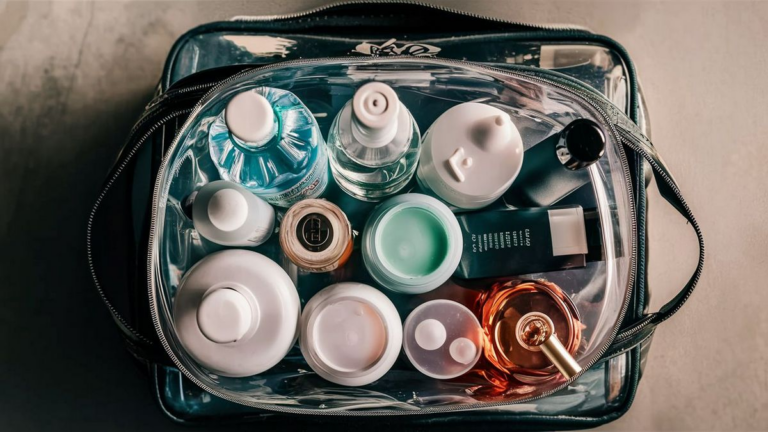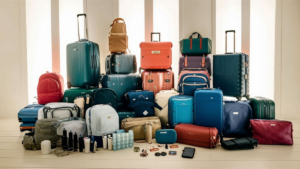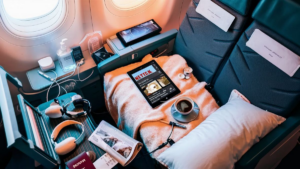When preparing for air travel, understanding the regulations regarding liquids is crucial to ensure a smooth journey through airport security checkpoints. As travelers, it’s essential to know what amount of liquid is allowed on a plane to avoid any inconvenience or potential confiscation of items.
Understanding TSA Guidelines
The Transportation Security Administration (TSA) enforces strict guidelines regarding the amount of liquid that passengers can carry onto a plane. These regulations are in place to maintain safety and security aboard aircraft.
Liquid Limitations
According to TSA regulations, passengers are permitted to bring liquids in containers that hold 3.4 ounces (100 milliliters) or less per item. These containers must be placed in a single quart-sized, clear, plastic, zip-top bag. Each traveler is allowed only one bag, which must be presented separately at the security checkpoint for inspection.
Exceptions to the Rule
While the 3.4-ounce rule is standard, there are exceptions for certain items, such as medications, baby formula, breast milk, and liquid-filled teethers. These items are allowed in reasonable quantities exceeding 3.4 ounces and are typically subjected to additional screening procedures.
Packaging and Presentation
Proper packaging is essential to comply with TSA regulations. All liquid containers must fit comfortably in the quart-sized bag, which should be sealed and easily accessible for inspection. It’s advisable to pack liquids separately from other items in carry-on luggage to expedite the security screening process.
Travel-Sized Containers
To comply with the TSA’s liquid restrictions, travelers can opt for travel-sized containers specifically designed to hold 3.4 ounces or less of liquid. These containers are readily available at most convenience stores and travel supply retailers.
Labeling and Identification
Ensuring that all liquid containers are properly labeled can help prevent delays during security checks. Travelers should use containers with clear labeling indicating the contents to facilitate the inspection process.
Consequences of Non-Compliance
Failure to adhere to TSA guidelines regarding liquids can result in confiscation of items or delays at security checkpoints. It’s essential for passengers to familiarize themselves with these regulations to avoid any inconvenience or disruption to their travel plans.
Disposal Options
If a passenger inadvertently brings prohibited liquids to the security checkpoint, they have several options for disposal. Some airports provide designated disposal bins where travelers can discard liquids before proceeding through security. Alternatively, passengers may choose to return items to their vehicles or check them in their luggage.
Security Screening Process
During the security screening process, TSA officers will visually inspect the quart-sized bag containing liquids. If necessary, they may conduct additional screening procedures, such as swabbing the exterior of containers for traces of prohibited substances.
Understanding the regulations regarding the amount of liquid allowed on a plane is essential for hassle-free air travel. By adhering to TSA guidelines and properly packaging liquids, passengers can expedite the security screening process and ensure a smooth journey to their destination.
Expediting Security Checks
Are there any strategies for speeding up the security screening process?
One effective strategy is to wear easily removable shoes and minimal jewelry, as these items can slow down the screening process. Additionally, organizing electronic devices and loose items in your carry-on bag can help streamline the inspection process.
Electronic Devices
What should I know about carrying electronic devices through security?
Electronic devices such as laptops and tablets must be removed from carry-on luggage and placed in a separate bin for X-ray screening. Ensuring that these devices are easily accessible can help expedite the security check.
Opting for PreCheck or Clear
Are there any programs that can help expedite the security screening process?
Yes, programs like TSA PreCheck and Clear offer expedited security screening for pre-approved travelers, allowing them to bypass standard security lines and enjoy a more efficient travel experience.
Additional Resources
Where can I find more information about TSA regulations and air travel guidelines?
For the most up-to-date information on TSA regulations and air travel guidelines, travelers can visit the official TSA website or contact their airline directly.
Mobile Apps
Are there any mobile apps that can assist with air travel preparation?
Yes, several mobile apps provide real-time updates on flight statuses, security wait times, and airport amenities, making them valuable tools for travelers navigating the complexities of air travel.
Traveling with Pets
What should I know about traveling with pets?
Travelers should familiarize themselves with airline policies regarding pet travel and ensure that their pets meet all necessary health and documentation requirements. Additionally, it’s essential to pack food, water, and comfort items for pets to ensure a safe and comfortable journey.
See also:






